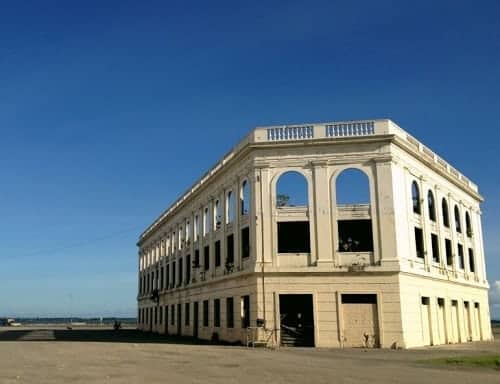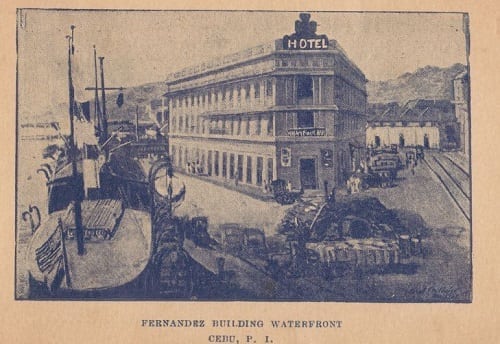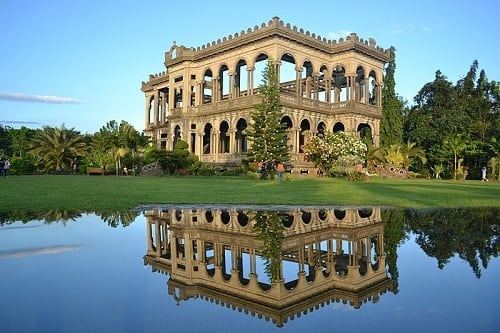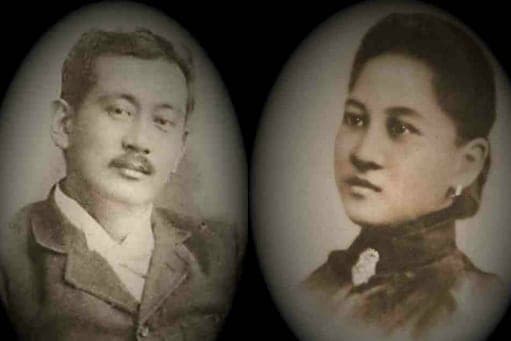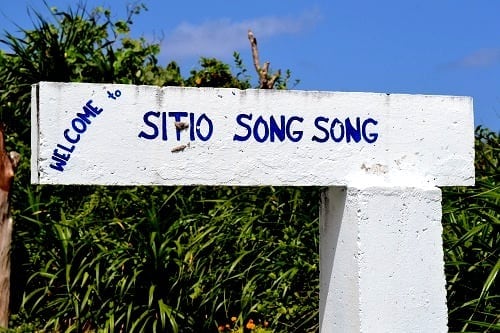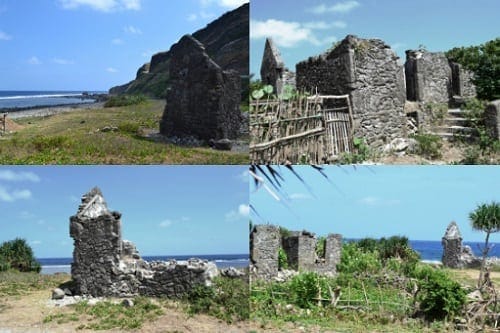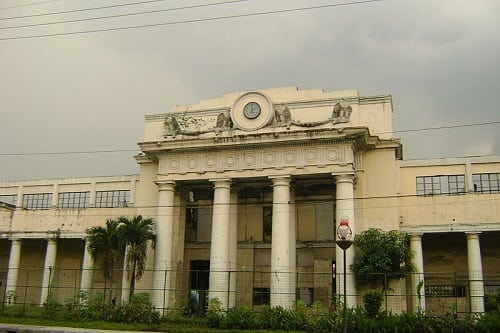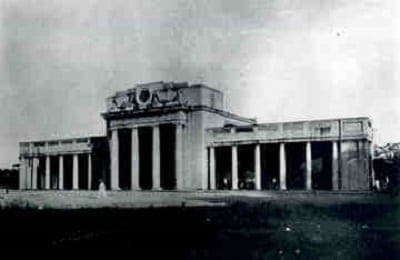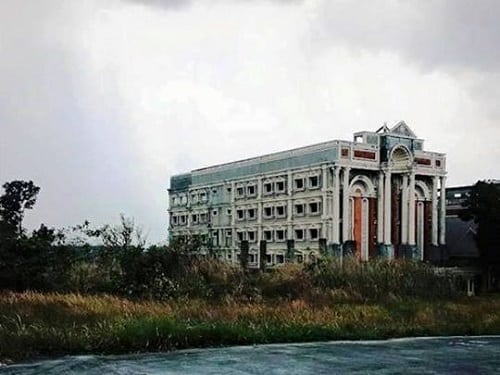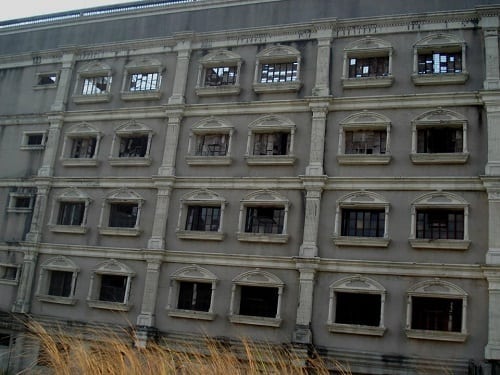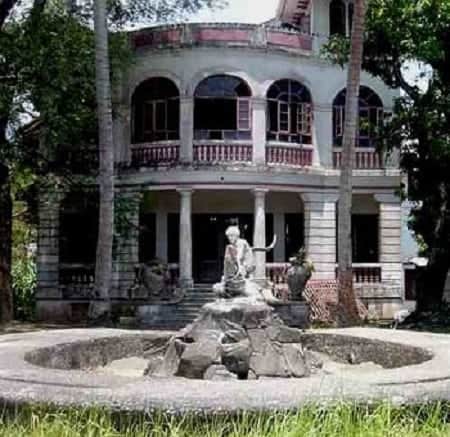The 8 Most Haunting ‘Abandoned’ Places in the Philippines
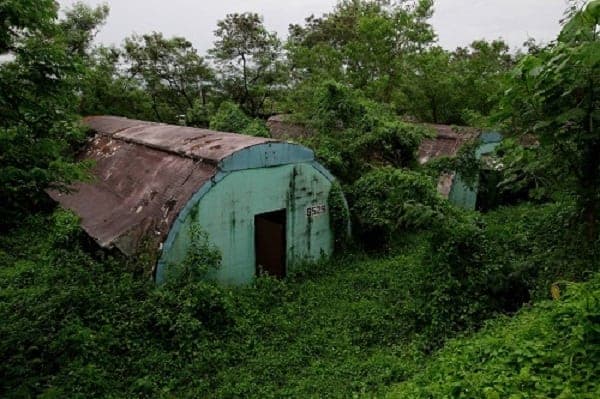
While the Philippines’ population continues to increase, it’s quite fascinating to know that there are still places in the country that remain uninhabited–or nearly uninhabited.
Today, they are now considered as monuments of history and mementos of people who saw the glorious years of their respective era. On this list, we will explore some of the country’s most hauntingly beautiful ghost towns and abandoned buildings. Get ready to be fascinated.
1. Compañia Maritima (Cebu City)
Standing on a 42,000-square meter property behind the Cebu City Hall, Compañia Maritima is now at the center of a legal battle between the national and the city government who are both fighting for its ownership. Controversies aside, the abandoned building is one of the underrated symbols of Cebu’s rich heritage.
Also Read: 0 Amazing Facts You Probably Didn’t Know About Cebu
Facing the South Road Properties (SRP), the imposing structure was built in 1910. It was known then as the Fernandez Building, named after the company who owned it–Fernandez Hermanos Inc. In her book “Glimpses of Old Cebu: Images of the Colonial Era,” author Lucy Urgello Miller said that the building was occupied by Shamrock Hotel in the 1930s, as evidenced by the postcard below that has survived the ravages of time.
WWII was not kind to Fernandez Building: Bombs and enemy fires destroyed its roof and internal structure. The post-war era, however, saw the building being repaired and then occupied by Compañia Maritima, one of Cebu City’s biggest shipping lines and from which the building got its present name.
As fate would have it, the company filed for bankruptcy in the late 1980s, and the building has been abandoned since. Today, the three-story Compañia Maritima is still surviving; it’s arched windows and balusters at the roof deck serving as silent witnesses to the interesting history of this architectural marvel.
Related: How to Travel to Cebu: 30 of the Best Tourist Spots to Visit
2. The Ruins (Talisay City, Negros Occidental)
Before it was opened to the public in 2008, The Ruins in Talisay City was an abandoned ancestral house only few would dare visit. Now dubbed as the “Taj Mahal of Negros,” this iconic landmark built in the middle of a sugar plantation is no longer insignificant: Tourists have been captivated not only by the structure’s Italianate architecture but also by the tragic love story that gave birth to it.
Just like its counterpart in India, The Ruins in Talisay City was also built by a distraught man who lost his lady love. Don Mariano Ledesma Lacson (1865-1948), a Negrense sugar baron, was grief-stricken when his first wife died while pregnant with their 11th child.
Doña Maria Braga, a Portuguese lady whom Lacson first met while traveling in Hongkong, accidentally slipped in a bathroom and bled profusely. It took a while before the doctor from another town arrived, and before he did, Braga and the baby had passed away already.
Related Article: The 6 Most Tragic Love Stories in Philippine History
Such was Lacson’s love for his departed wife that he commissioned several workers to build a grand mansion in her honor. During WWII, however, Lacson sought the help of Filipino guerrillas in deliberately burning the mansion lest the Japanese would turn it into their headquarters.
Lacson was eventually remarried to Concepcion Diaz of Talisay, while his 400-hectare land was divided among his 10 children. Merced Lacson–who would marry Manuel Javellana of Jaro, Iloilo–inherited the land where The Ruins is now standing.
Although the Lacson mansion today is basically a skeleton of the original, it never fails to impress local and foreign tourists–so much so that it has been considered as one of the world’s most fascinating ruins.
3. Quonset Huts (Subic, Zambales)
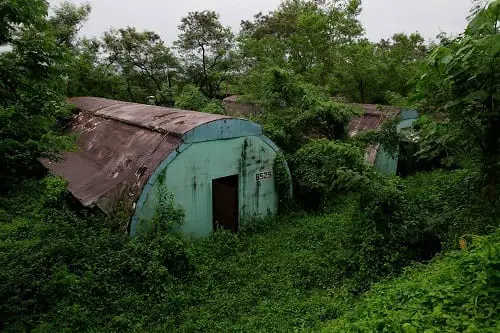
Quonset huts are semi-cylindrical structures built to house troops and military surplus. The design of American Quonset huts was based on the smaller Nissen huts used during the First World War.
In the Philippines, the same structures populated the former US Navy base inside the Subic Bay Freeport Zone in Zambales. These Quonset huts were used as barracks for US Marines and have survived various calamities, among them the cataclysmic eruption of the Mt. Pinatubo in 1991.
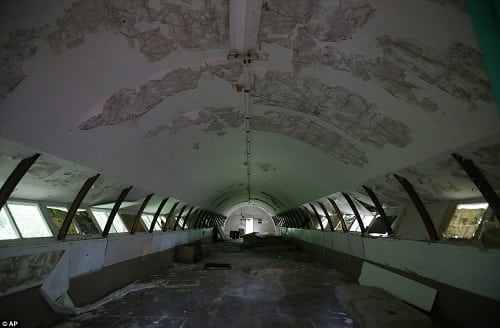
Unfortunately, in 1992, the Philippine Senate agreed not to extend the lease on the facility, which led to the closure of the American naval base. Since then, some of the Quonset huts have been transformed into offices and restaurants. The unfortunate ones met the wrecking ball and were subsequently replaced by new buildings.
Interestingly, few of these Quonset huts remain today, some of which are abandoned and have not been inhabited since the Americans left the place many years ago.
4. Aduana Building (Intramuros, Manila)
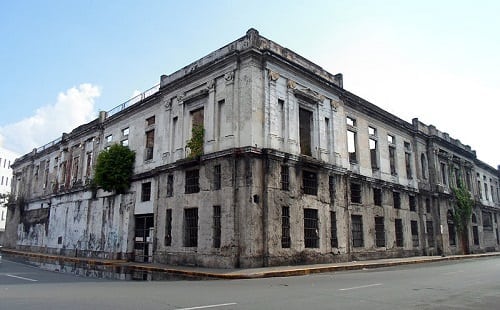
Designed by Spanish engineer Tomas Cortes, the Aduana or Customs House was built in Intramuros supposedly “to attract merchants to remain within the walls rather than outside it.”
The original building was completed in the 1820s, but serious damages brought by an 1863 earthquake led to its demolition in 1872. A new building was constructed shortly thereafter, and it housed different offices of the Spanish colonial government: Treasury, the Casa de Moneda (Mint), the Customs, and the Intendencia General de Hacienda (Central Administration).
The Customs offices were later transferred to the port area, leaving the building to the Treasury and Intendencia.
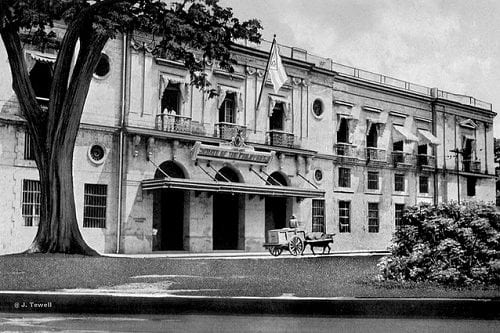
Heavily damaged during WWII, the building was rehabilitated and soon occupied by the Central Bank Building, followed by the National Treasury, and finally, by the Commission on Elections.
In 1979, a huge fire razed Aduana and it has been abandoned since. The two-story building of Neo-Classical architecture is now being eyed as the future office of the National Archives.
READ: 20 Beautiful Old Manila Buildings That No Longer Exist
5. Sitio Song Song (Uyugan, Batanes)
Situated 23 kilometers from Basco, Batanes is a “ghost barangay” known to the locals as Sitio Song Song. The abandoned village is actually part of the Uyugan municipality in Batan, one of the major islands of the province.
According to a marker installed by the municipality under the term of Mayor Maria Ibay, Song Song is said to have been established during the American period when “the people of Uyugan had greater freedom to resettle outside Uyugan Centro closer to their farms.”
The small settlement was a mere cluster of stone houses (think traditional Ivatan bahay na bato) that were unfortunately devastated by a tsunami between 1953 and 1954. The Magsaysay government came to the rescue and put the villagers under its resettlement program. Most, if not all, of the residents eventually settled in Mindanao, and Sitio Song Song was literally abandoned for decades.
READ: 9 Interesting Facts You Might Not Know About Batanes
Although some Ivatans have re-inhabited the area in recent years, they are few and far between. Sitio Song Song remains a peaceful area visited by tourists who want a glimpse of its fascinating ruins.
6. Paco Train Station (Paco, Manila)
Designed by prominent American architect William Parsons, the Philippine National Railway Paco Station is said to be reminiscent of New York City’s Pennsylvania Station.
Also Read: 29 Things You’ll Never See in Manila Again
The Paco railroad station was established on March 25, 1908, coinciding with the opening of the railroad line from Paco to Binakayan, Cavite and the Manila Belt Line from Tutuban to Paco (the Paco-Muntinlupa line would be inaugurated three months later).
The now-abandoned Paco Train Station Building, on the other hand, was completed in 1915. It predates the construction of other important Manila landmarks such as the Metropolitan Theater, Manila Post Office, and the present-day Manila City Hall.
In the Second World War, the Paco Railroad Station was the backdrop of a destructive battle; the recapture of the station marked the defeat of the remaining Japanese forces in the city. Fast forward to the 1990s, the building was nearly demolished to give way to a new mall. Fortunately, it didn’t push through, and advocates have since fought for its preservation.
In June 2015, the Heritage Conservation Society (HCS) led by its president Ivan Anthony Henares praised the Department of Transportation and Communications (DOTC) for its initiative to restore the old Paco Train Station “as part of the overall rehabilitation of the Philippine National Railways (PNR) system.”
7. St. James College of Calamba (Calamba City, Laguna)
Standing along the highway leading towards Batangas, this abandoned building is an eerie reminder that schools, just like ordinary businesses, aren’t immune to bankruptcy.
St. James College of Calamba opened in 1997 offering courses in pre-school, elementary, and high school. It also had courses in the collegiate level, and its first batch of college students graduated in 2000.
The school was actually part of the St. James College System, its first and original branch being the Quezon City campus founded in 1971 by businessman Jaime Torre and his wife, Myrna Montealegre.
During the late 1990s, the business was doing well for St. James, with new branches established in Sta. Mesa Heights, New Manila, Parañaque, and, lastly, Calamba. In 2005, however, the Bureau of Internal Revenue (BIR) filed tax evasion charges against Jaime Torres for failing to remit taxes amounting to over 48 million pesos from 2000 to 2001. And it all went downhill from there.
Although it’s not clear what really led to the closure of the Calamba campus, a memorandum in 2012 announcing the closure of its sister school in Parañaque gives us an idea. According to the Board of Directors, St. James School of Parañaque would stop its operations because the “drop in enrollment and increasing costs of operation have combined to produce continuing losses, which our school can no longer afford to pay for.”
Update: The abandoned St. James College building has already been demolished. The area where it used to stand is now occupied by the National University – Laguna, the first NU campus outside Metro Manila. The university, owned by Henry Sy, Sr., has been operational since S.Y. 2018 -2019.
8. The Old Herrera Mansion (Tiaong, Quezon)
This imposing stone mansion is considered as the oldest house in Tiaong. By the look of its broken windows and dilapidated rooms, it’s obvious that this structure has seen better days. Built sometime in the late 1920s, it was owned by Isidro Herrera and designed by the renowned architect of his time, Tomas Mapua.
READ: 5 Scariest Buildings in the Philippines
The house survived WWII, but not unscathed: Its back part was damaged by bombings and subsequently rehabilitated by an architect from Candelaria by the name of C. Gonzales. Today, the decaying mansion stands as a monument of a bygone era; its eye-catching garden sculpture of Elias conquering a crocodile serving as a stark reminder of its colonial past.

According to one of Isidro’s descendants, Angela Stuart-Santiago (author, Revolutionary Routes), the Elias-crocodile sculpture in the Tiaong mansion’s garden is “a message from Rizal set in stone by Lolo Isidro in the time of America some 83 years ago… He must have seen that America was…here to stay; and it would take another revolution to regain lost ground.”
A son of a wealthy peasant, Isidro would join the Revolution of 1896 while his wife, Juliana, “maintained a place for revolutionaries far from towns where Spanish rule was ending in violence.”
As for the old mansion, many locals have attested that it’s now haunted by ghosts ranging from headless Japanese soldiers to elderly couple garbed in white.
References
Dalipe, G., & Cuizon, R. (2015). CPA sues City Hall. Sun Star Cebu. Retrieved 3 September 2015, from http://goo.gl/LSXF5r
Gatdula, D. (2005). School owner faces tax evasion raps. philSTAR.com. Retrieved 4 September 2015, from http://goo.gl/UM0SNE
Inquirer.net,. (2013). Mansion’s tale told–with dose of humor. Retrieved 4 September 2015, from http://goo.gl/A1U2ab
Javellana, R. (2003). In and Around Intramuros (p. 66). 12th Degree Latitude Books.
Manila Standard,. (2002). Best in the field of education: the history of St. James School, p. A8. Retrieved from https://goo.gl/DTuhNQ
Mayuga, S. (2011). ‘The past is present still’ in Revolutionary Routes. GMA News Online. Retrieved 4 September 2015, from http://goo.gl/w0Hme2
Miller, L. (2010). Glimpses of old Cebu : images of the colonial era. Cebu City: University of San Carlos Press.
Palaña, V. (2015). Paco restoration earns accolades. The Manila Times. Retrieved 4 September 2015, from http://goo.gl/SBhiZS
philSTAR.com,. (2014). PHOTOS: A look at the world’s abandoned places. Retrieved 4 September 2015, from http://goo.gl/G3NtVQ
Piccio, B. (2013). The Taj Mahal of Negros. Choose Philippines. Retrieved 4 September 2015, from http://goo.gl/ObBIqY
Piccio, B. (2015). This Love Story of Fame, Power & Tragedy is Why “The Ruins” are a Valentines Destination. Choose Philippines. Retrieved 4 September 2015, from http://goo.gl/BTdYTZ
Rabago-Visaya, L. (2015). Forgotten national soul. philSTAR.com. Retrieved 3 September 2015, from http://goo.gl/cgH8kE
Railways And Industrial Heritage Society of the Philippines, Inc.,. (2009). MEMORANDUM OF UNDERSTANDING For the Preservation, Restoration and Development of Philippine National Railways Living Museum and Heritage Village. Retrieved 4 September 2015, from http://goo.gl/9YGQea
StuartXchange,. The Haunted House in Tiaong, Quezon, Philippines. Retrieved 4 September 2015, from http://goo.gl/1eTtbK
FilipiKnow
FilipiKnow strives to ensure each article published on this website is as accurate and reliable as possible. We invite you, our reader, to take part in our mission to provide free, high-quality information for every Juan. If you think this article needs improvement, or if you have suggestions on how we can better achieve our goals, let us know by sending a message to admin at filipiknow dot net
Copyright Notice
All materials contained on this site are protected by the Republic of the Philippines copyright law and may not be reproduced, distributed, transmitted, displayed, published, or broadcast without the prior written permission of filipiknow.net or in the case of third party materials, the owner of that content. You may not alter or remove any trademark, copyright, or other notice from copies of the content. Be warned that we have already reported and helped terminate several websites and YouTube channels for blatantly stealing our content. If you wish to use filipiknow.net content for commercial purposes, such as for content syndication, etc., please contact us at legal(at)filipiknow(dot)net
